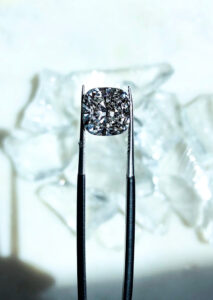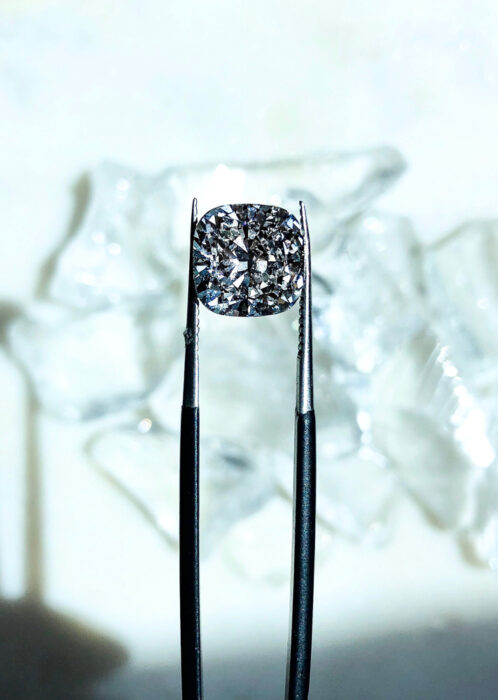
This essay explores the science behind artificial diamonds, their production methods, their applications, and the ethical and environmental considerations surrounding their emergence.
The Science Behind Artificial Diamonds
Artificial diamonds are chemically identical to their natural counterparts; they are composed of carbon atoms arranged in a crystal lattice structure. This structure, with carbon atoms covalently bonded in a tetrahedral arrangement, is responsible for the diamond’s remarkable hardness and luster. The key to producing artificial diamonds lies in replicating this structure under controlled conditions. There are two main methods for creating artificial diamonds: High Pressure High Temperature (HPHT) and Chemical Vapor Deposition (CVD). The HPHT method involves subjecting carbon to extreme pressure and high temperatures, akin to the conditions in the Earth’s mantle. The CVD method, on the other hand, relies on the deposition of carbon atoms onto a diamond seed crystal, creating a layer-by-layer growth. Both techniques offer precise control over the diamond’s size, quality, and appearance.
Artificial Diamonds In Industry
The applications of artificial diamonds span a wide range of industries, from gemology to cutting-edge technologies.
- Gemology: Lab-grown diamonds have gained increasing acceptance in the jewelry market.
- Cutting And Polishing Tools: Artificial diamonds have exceptional hardness, making them ideal for industrial applications. They are used to cut, grind, and polish various materials, from metals to ceramics, with incredible precision. The durability of artificial diamonds in cutting tools significantly reduces maintenance and replacement costs.
- Electronics: The electronics industry relies on artificial diamonds for their exceptional thermal conductivity, electrical insulating properties, and durability. They are used in high-power electronic devices, such as transistors and diodes, where their unique combination of properties is advantageous.
- Scientific Research: The nitrogen-vacancy centers in diamonds are of particular interest for quantum applications due to their ability to manipulate and store quantum information.
- Medical Equipment: Artificial diamonds are used in medical equipment like MRI machines, where their high thermal conductivity helps dissipate the heat generated during the imaging process. This contributes to both patient safety and image quality.
Ethical And Environmental Considerations
The emergence of artificial diamonds has raised ethical and environmental concerns in the diamond industry.
Ethical Considerations:
- Conflict-Free: Lab-grown diamonds are free from the ethical concerns associated with “blood diamonds” or “conflict diamonds” that are often sourced from regions with a history of human rights abuses.
Environmental Considerations:
- Reduced Environmental Impact: The process of creating artificial diamonds generally has a lower environmental footprint than mining natural diamonds. It reduces the damage to ecosystems and the energy consumption associated with diamond extraction.
- Water And Land Conservation: Artificial diamonds reduce the demand for water and land resources required for mining, protecting fragile ecosystems and conserving natural habitats.
Artificial diamonds represent a remarkable achievement in materials science and technology. Their applications extend from the world of jewelry to advanced technology and research. While the emergence of lab-grown diamonds does not diminish the appeal of natural diamonds, it offers consumers and industries a more sustainable and transparent alternative. The future of artificial diamonds holds the promise of further technological advancements, making them even more accessible and versatile. As technology continues to evolve, artificial diamonds will likely play a pivotal role in various industries and contribute to a more sustainable and ethically responsible approach to acquiring these timeless gemstones.
